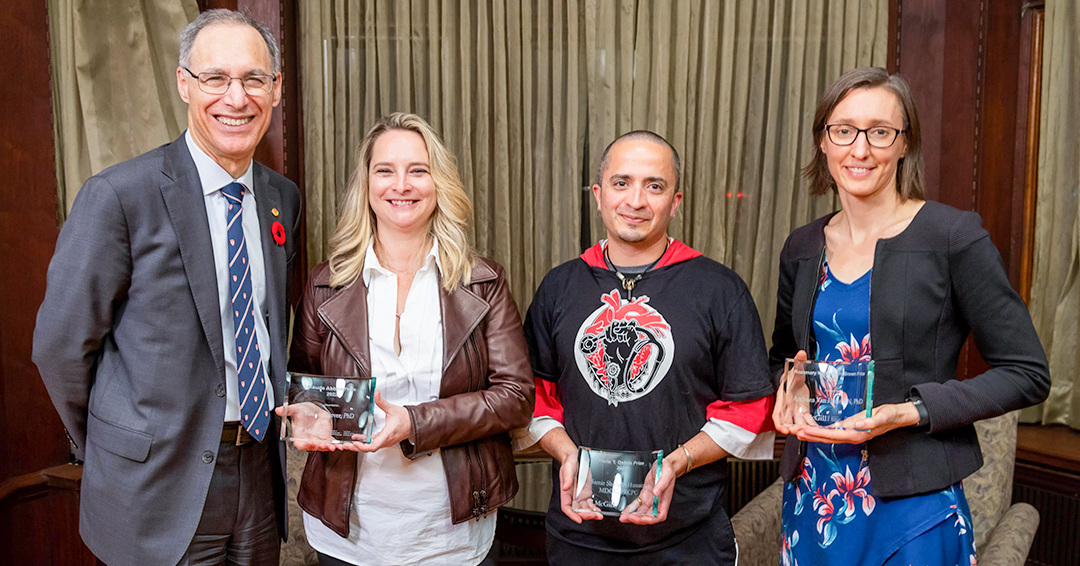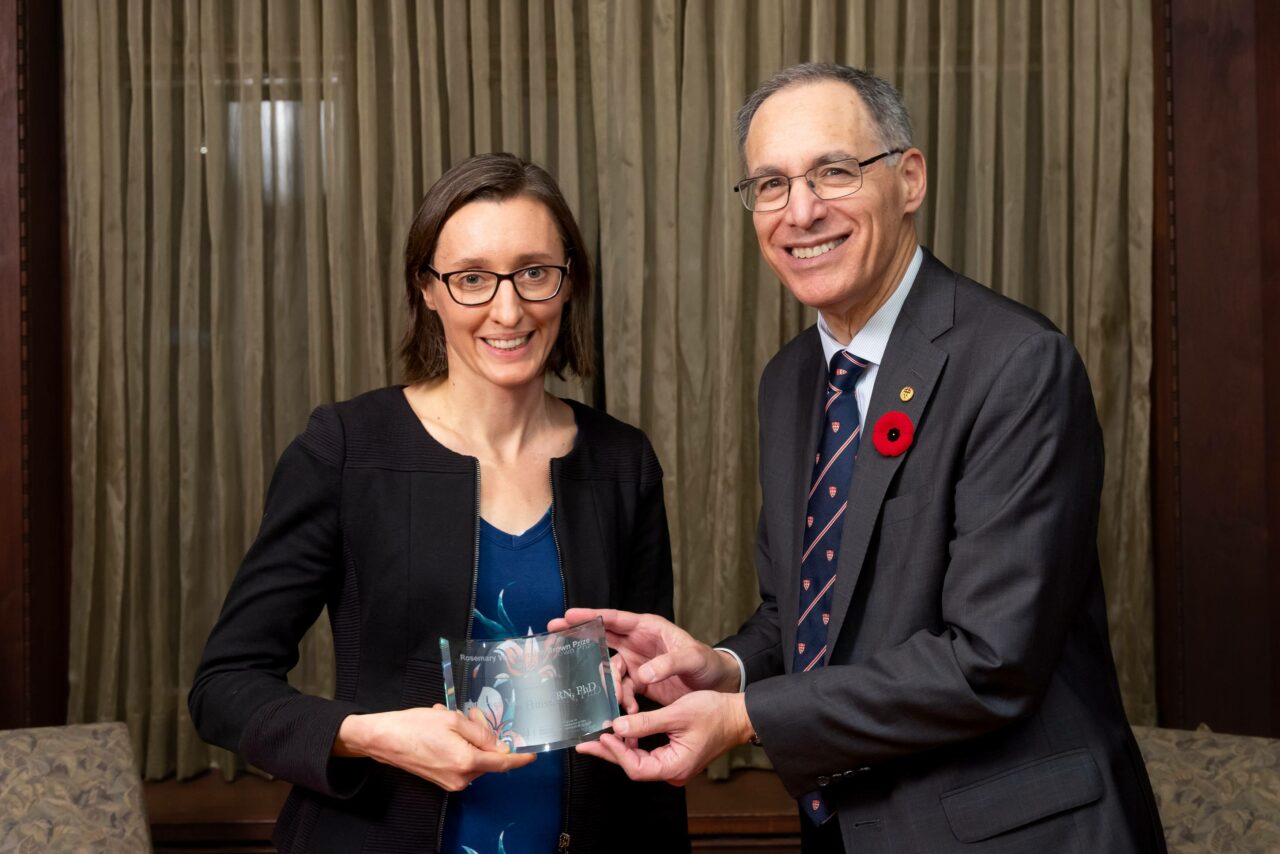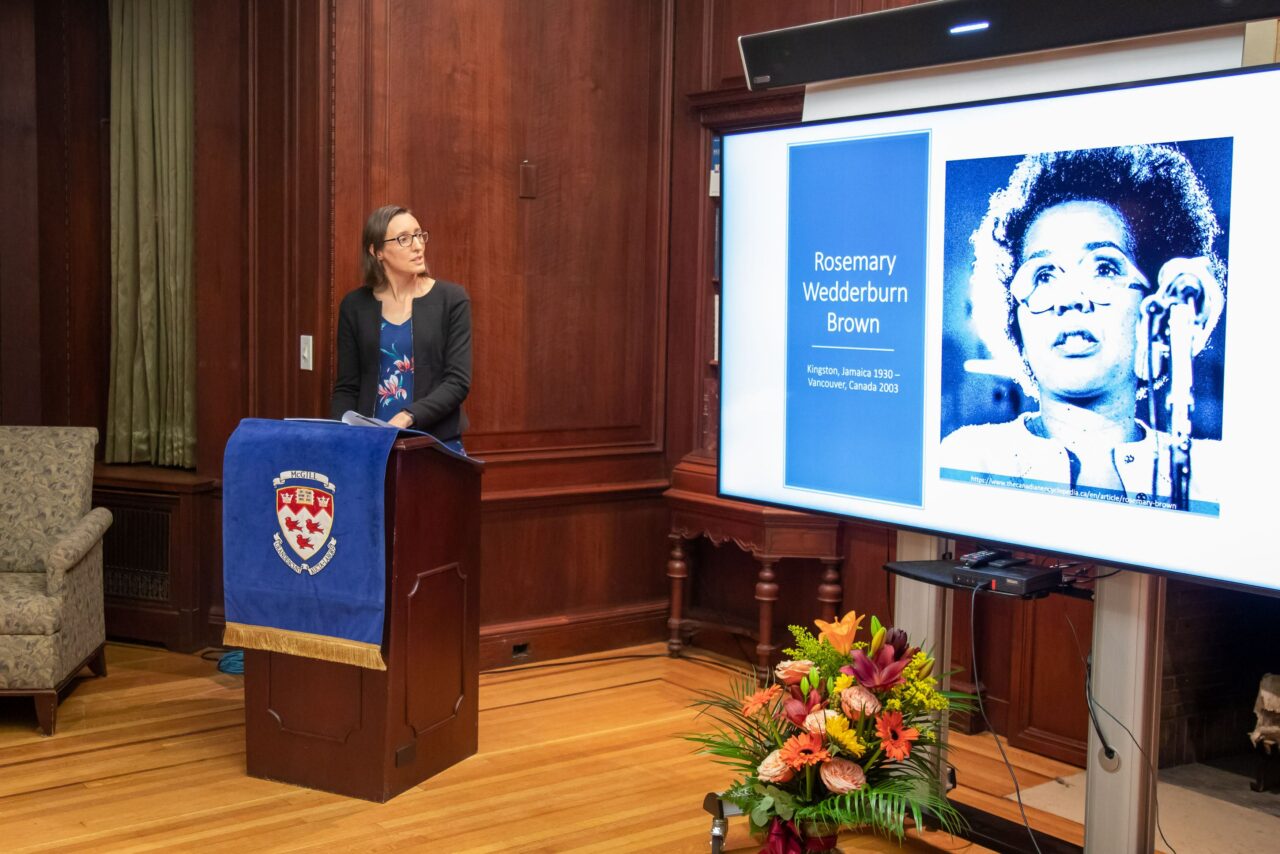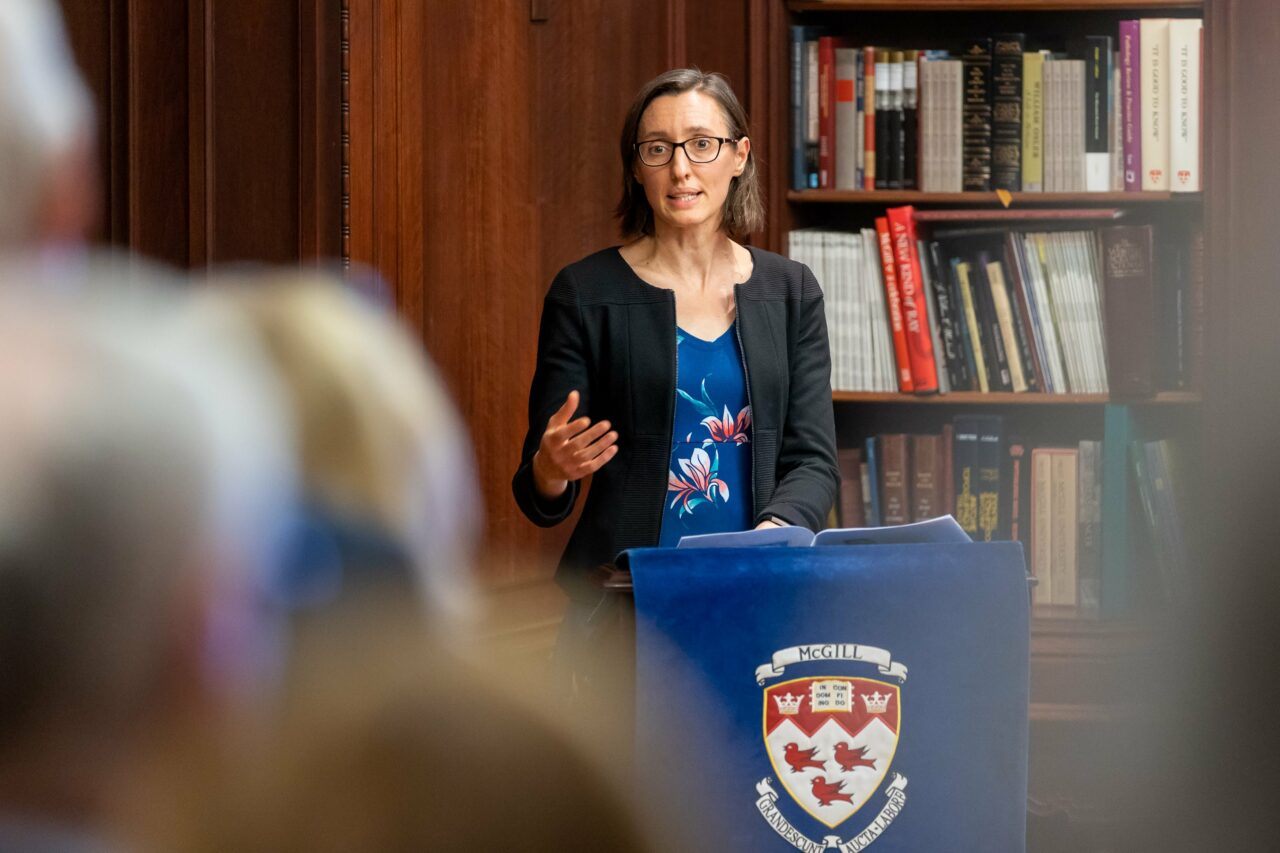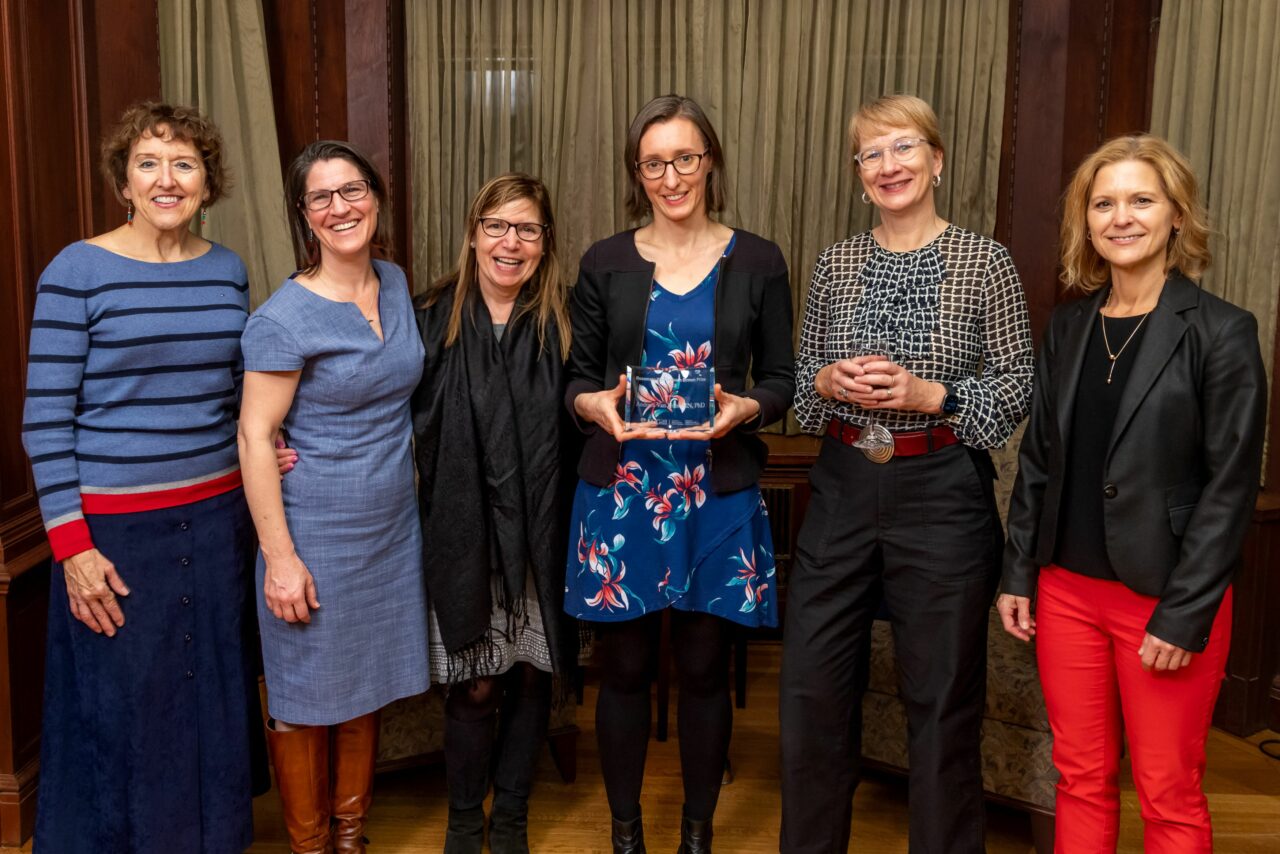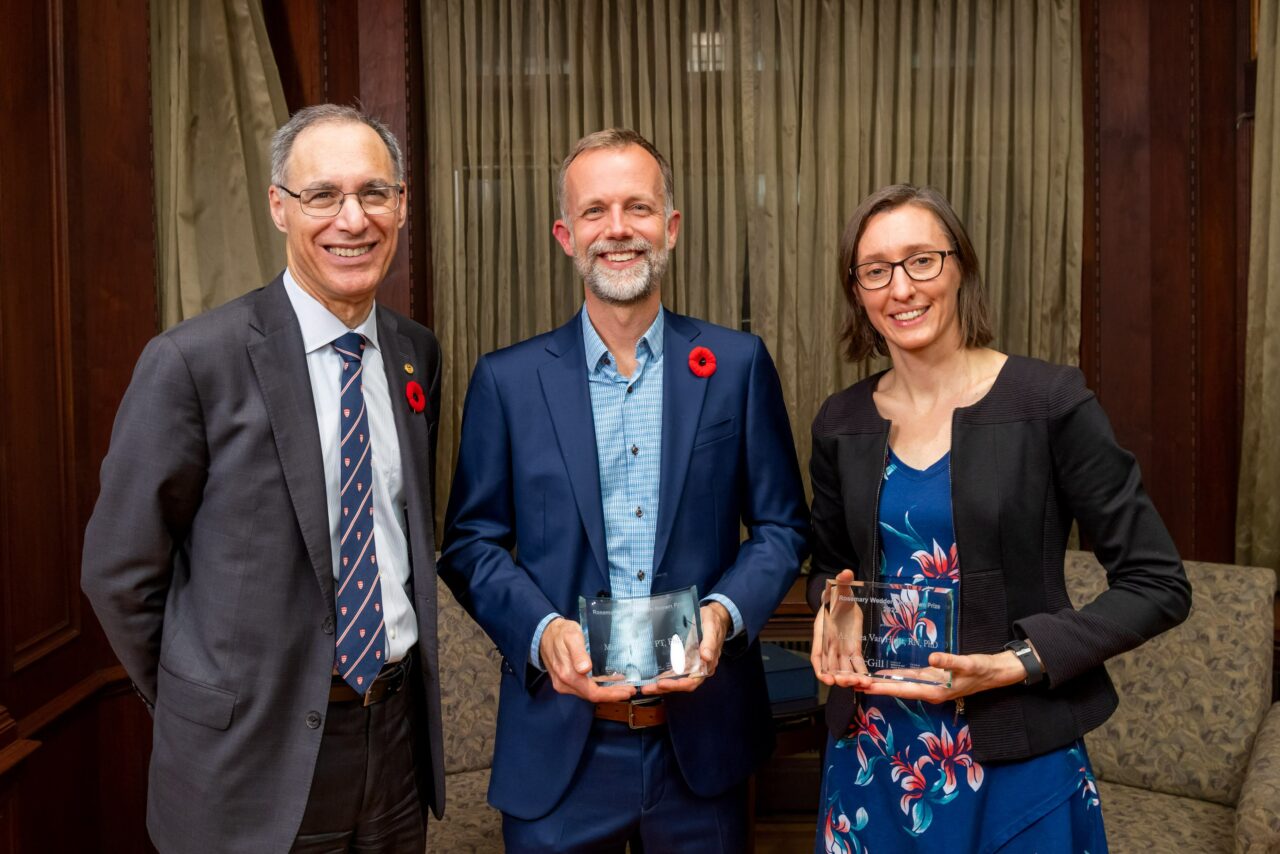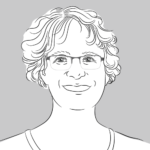Prize money will go towards a project to co-develop a health equity focused research agenda
Ingram School of Nursing (ISoN) researcher Andraea Van Hulst, RN, PhD, is this year’s recipient of McGill’s Rosemary Wedderburn-Brown Prize. The award recognizes faculty with outstanding scholarly potential and demonstrated research excellence in the early stages of their career. Rosemary Wedderburn Brown immigrated to Quebec in 1951 to attend McGill University and to British Columbia in 1955, where she completed a graduate degree in social work. Her experiences with racism were the impetus for her career as an activist and politician determined to eliminate the barriers that minority groups faced within Canadian society. We sat down with Prof. Van Hulst to learn more about her reaction to winning this prize, her inter-professional approach to research, and her research on the role that the built environment plays in childhood health.
A major focus of your research on child obesity and cardio-metabolic health is in built environments. Can you explain what this means?
Research has shown that childhood obesity is a risk factor for chronic conditions such as diabetes and heart disease. We also know that childhood obesity is caused by the complex interplay of biological and physiological factors such as genetics and hormones, lifestyle factors such as nutrition, physical activity and sedentary behaviour, and environmental factors such as the family and neighbourhood environments. The built environment comprises the human-made amenities and infrastructures which make up the neighbourhoods where children live, go to school and play. Research has shown that features of the built environment can make it easier or more difficult for children and their families to adopt and maintain healthy lifestyles. For example, there are neighbourhoods that offer opportunities for active living such as sidewalks, parks and recreation centres, and other neighbourhoods that create barriers to a healthy, active lifestyle.
How did you become interested in this line of research?
When I graduated in 2003 with a Bachelor’s of Nursing from McGill, my first job was in the Emergency Room at a downtown hospital. I saw firsthand how poverty, homelessness, substance abuse, and racism towards the Indigenous population and other groups led to negative health outcomes. I also was influenced by the community health courses I completed in the last year of nursing school. I wanted to learn more about health promotion and disease prevention strategies, in particular strategies that could address health inequalities. I decided to pursue a Master’s in Public Health, followed by a PhD, both from the University of Montreal, to study broad contextual factors, such as built environments, that shape people’s health.
What role can researchers and health professionals play in creating more opportunities for healthy and active living in disadvantaged neighbourhoods?
We play a key role in several ways: assessing neighbourhood risks and protective factors, advocating for healthier neighbourhoods, and tailoring care to the opportunities that are available in the neighbourhoods of the people under our care. Nurses also play a key role in providing proximity health care services directly in disadvantaged and underserved neighbourhoods. A great example of this is La Maison Bleue which provides integrated medical and social services to mothers and their families from pregnancy until the child reaches the age of five. La Maison Bleue operates through four sites located in Montreal neighbourhoods with high concentrations of poverty. Through a partnership with the Ingram School of Nursing, a number of students in our Master’s Global Health concentration have done their clinical placements as well as research projects at La Maison Bleue.
What does winning the Rosemary Wedderburn Prize mean to you and how do you plan to use this funding to further your research?
When I found out that I was nominated for this award, I took a closer look at Rosemary Wedderburn Brown’s life and came away deeply moved by her life story, her activism and her determination to improve the lives of marginalized communities in Canada. I am humbled by this award – it is an honour, but it also comes with a commitment to contribute to the work led by Wedderburn Brown: help bridge the health equity gap and create a more just society for the marginalized and the oppressed. With this in mind, I am putting the $10,000 prize money towards a project to co-develop a health equity focused research agenda with La Maison Bleue. Many of the clients are asylum seekers and mothers with very low income – people who typically do not have a voice in society and in health services decisions. I want them to have a voice in shaping research priorities so that we ask the right research questions and implement quality improvement activities to best meet their needs. I am actively seeking additional funding from major granting agencies to get this project off the ground. I am really excited by this opportunity to further Rosemary Wedderburn Brown’s legacy.
- Left to right: David Eidelman, MDCM, Vice-Principal (Health Affairs) and Dean of the Faculty of Medicine and Health Sciences; Tamara Carver, PhD, recipient of the 2022 Maude Abbott Prize; Samir Shaheen-Hussain, MDCM, recipient of the 2022 Haile T. Debas Prize; Andraea Van Hulst, PhD, RN, recipient of the 2022 Rosemary Wedderburn Brown Prize 2022
- 2022 recipient of the Rosemary Wedderburn Brown Prize, Prof. Van Hulst, and Dr. Eidelman
- Prof. Van Hulst
- Prof. Van Hulst
- Prof. Van Hulst and colleagues
- 2020 and 2022 recipients of the Rosemary Wedderburn Brown Prize with Dr. Eidelman: Prof. Hunt, PT, and Prof. Van Hulst (not pictured: 2021 recipient, Professor Noèmie Auclair-Ouellet)

